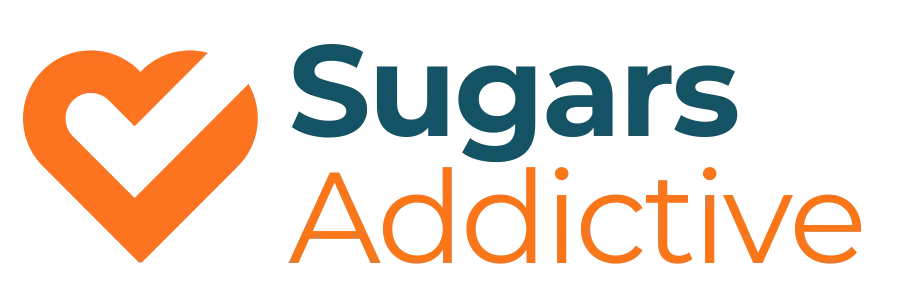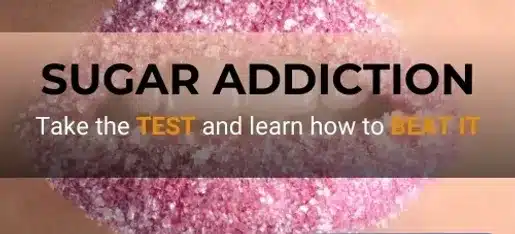Let’s face it, we’ve all had those moments. You’re trying to eat better—maybe you’ve cut down on sugar or processed foods—and then out of nowhere, you’re elbow-deep in a tub of ice cream or tearing through a bag of crisps. You’re not even hungry. That’s what’s so frustrating! You just… need it. And afterward? The guilt. The shame. The big question: Why can’t I stop doing this?
This is what you need to know. It’s not lack of will power.
You’re not weak. You’re not broken. You’re not out of control. And you haven’t failed.
You’re just human—and your brain is doing exactly what it was designed to do. It’s all about dopamine.
So let’s talk about it. Let’s talk about how dopamine works, how it drives your behaviour, and how it’s playing a starring role in your battle with sugar and ultra-processed foods.
What Is Dopamine?
Dopamine is a neurotransmitter—a chemical messenger in the brain. It plays a critical role in how we experience pleasure, motivation, and reward. But here’s the problem: dopamine is less about feeling good and more about wanting to feel good.
Think of it like the brain’s “get up and go” chemical. It’s what pushes us toward goals, desires, rewards—even if those rewards aren’t good for us.
Dr. Anna Lembke, a psychiatrist and addiction expert at Stanford, puts it this way:
“Dopamine is the most important neurotransmitter for the experience of pleasure, reward, and motivation… and it’s the common pathway for all reinforcing substances and behaviours.”
That includes drugs. But it also includes sugar, crisps, chocolate, pizza, Netflix, social media—and just about anything else that makes your brain go oh yes, more please.
Why Sugar Is So Addictive
Sugar and ultra-processed foods light up the brain’s reward circuit—the same pathway activated by addictive drugs like cocaine or alcohol.
Every time you eat something sweet, your brain gets a rush of dopamine. It’s like fireworks in the brain. Dopamine shoots out like ass from a fire hose and the sweeter, saltier, or more processed the food, the bigger the dopamine release. That makes your brain say, “ Wow! That was good—let’s do it again!”
But over time, something shifts.
The Dopamine Deficit State (Why More Never Feels Like Enough)
Your brain wants to stay balanced. Just like the rest of your body. So when you keep hitting your brain with big bursts of dopamine, it adapts. It turns down the volume and stops receiving the messages. This is called downregulation.
Think of your brain like a see-saw. Every pleasure you experience tilts it to one side. But your brain, trying to stay level, sends out little “gremlins” to bring the see-saw back to balance. Eventually, those gremlins overcorrect—and now the balance tips in the opposite direction. That’s the pain side.
This is what Dr. Lembke calls the dopamine deficit state. You feel flat, foggy, irritable, anxious, and constantly in need of your next hit—your next sugary snack, your next dopamine burst.
So, you eat the chocolate again. But it doesn’t feel as good.
So, you eat more. Still doesn’t help.
And suddenly, you’re chasing a high that never comes.
This is how addiction—yes, even to sugar and ultra processed food—starts.
Motivation and Dopamine: Why You “Can’t Be Bothered” Anymore
Here’s a wild study Dr. Lembke talks about:
Researchers bred rats with no dopamine in their brains. They offered them food. If the food was placed directly in the rat’s mouth, it would eat and seem to enjoy it. But if the food was just a few inches away?
The rats starved to death.
They couldn’t be bothered to go get it—not because they weren’t hungry, but because without dopamine receptors, they had no motivation. That’s how powerful dopamine is. It’s the spark that gets you moving toward a reward. Without it, you stop trying.
Now think about what happens when your brain is flooded and fried from years of sugar and stimulation. Your dopamine receptors get burned out. Your motivation tanks. Your energy is low. Life starts to feel… grey.
That’s not laziness. That’s biology. You done gone and burn out your dopamine receptors and there’s nothing left to draw down on and motivate you for change.
What Triggers Cravings (Even When You’re Not Hungry)
Here’s something even more mind-blowing:
You don’t even need to eat the food to get a dopamine spike. Just seeing it, smelling it, or thinking about it can cause a mini dopamine release—which then leads to craving.
That’s why walking past a bakery, scrolling Instagram, or watching a cooking show can suddenly have you thinking, I need a cookie. Like now.
Your brain gets a little dopamine “preview,” and then drops you into a deficit again to drive you toward the full reward. It’s a trap.
So no, you’re not imagining it. You’re not “making a big deal out of nothing.”
Cravings are real, physical, and chemical.
But here’s the good news: You can break the cycle.
How to Reset Your Brain and Reclaim Control
If you’re deep in the dopamine loop with food, there’s a way out. It’s not instant. It’s not always easy. But it’s very, very possible.
1. Take a Break From the Highs (30 Days of No-Sugar = Brain Reset)
According to Dr. Lembke, 30 days without your “drug of choice” (in this case, sugar and processed food) can be enough to reset your brain’s dopamine system.
Why 30 days?
Because in the first two weeks, your brain goes into full-blown withdrawal. You’ll likely feel worse before you feel better. Cravings spike. Mood dips. Sleep may suffer. You might feel panicky or agitated. But by weeks 3 and 4, dopamine levels start to normalize. Your brain begins to heal.
And suddenly, those cravings lose their grip. The see-saw balances again.
2. Watch Out for Triggers (Your Brain Remembers)
Even after a reset, the cravings can return when you’re exposed to reminders. Smells. Ads. Emotional cues. Even stress or exhaustion.
One clever experiment with rats showed that after they were trained to associate a flashing light with getting cocaine, the light alone would trigger a dopamine spike—and even a drop into a craving state if they didn’t get the drug.
Our brains work the same way.
So part of recovery is learning your triggers and creating space between the urge and the action. If you know scrolling Uber Eats or keeping chocolate in the house sets you off, build buffers. Get support. Make your environment work for your goals.
3. Chase the Right Kind of Dopamine
Here’s the twist: dopamine isn’t bad. You actually need it. You just want to get it from natural sources that promote long-term balance instead of short-term chaos.
Try these:
- Exercise – A consistent, proven dopamine booster.
- Cold water therapy (cold showers or ice baths)
- Meditation & breathwork
- Novelty – Learn something new. Go somewhere new. Read a new book.
- Connection – Real human relationships release oxytocin and dopamine in balanced ways.
These things may not give you the instant hit that sugar does, but they support lasting mental health, energy, and calm.
4. Focus on One Day at a Time
A 30-day reset can feel overwhelming. So don’t think 30 days. Think “just today.”
You only ever have to get through today. Then tomorrow, you wake up and do it again. There’s real biochemical power in this reset-each-day rhythm.
This is also why recovery groups like AA emphasize one day at a time. It works. Because that’s how motivation and willpower are designed to function.
Wrapping It Up: You’re Not Alone, and You’re Not Doomed
Understanding dopamine doesn’t just explain your cravings—it empowers you to overcome them.
You’re not just fighting habits. You’re working with biology. And once you understand how your reward system has been hijacked, you can take steps to get it back on track.
Sugar and ultra-processed foods may have set the trap, but you hold the key. It’s possible to feel clear-headed, in control, and peaceful around food again. Not by going to war with your body—but by supporting your brain’s natural ability to reset and rebalance.
This isn’t about being perfect. It’s about being free – and who doesn’t want to experience that?




